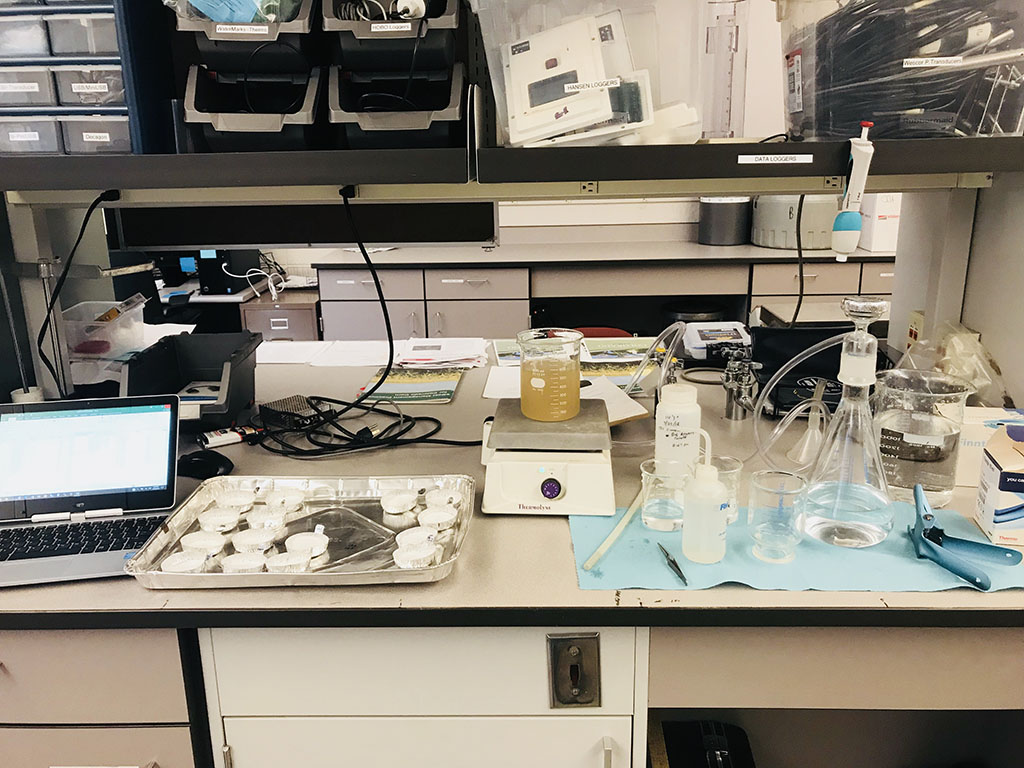
Water samples were collected from the inflow and outflow water samplers. These samples were brought back to the CSU Water Quality Lab and tested for total suspended sediment (TSS). The method for determining TSS was the EPA’s Standard Procedure. Nutrient testing was done at the Ward Laboratory, water samples were shipped to the laboratory.
BMP in Action - Farmer Designed Filter Strip
What is the Little Thompson River listed as impaired for under 303(d)?
- Selenium
- E. Coli
Selenium was not a paramter of this study, E. coli was studied during this project.
What water quality parameters were studied during the project?
- E. Coli
- Nitrate (NO3)
- Total Kjeldahl Nitrogen (TKN)
- Total Phosphorus (Total-P)
- Ortho-Phosphate (Ortho-P)
- Total Suspended Sediments (TSS)
- Ammonium (NH4)
Water quality samples were tested in lab and shipped to Ward Laboratories.
Why were those water quality parameters studied?
The parameters studied were common nutrients associated with agricultural runoff.
What in field data was taken from the filter strip?
- Soil bulk density
- Soil fertility
- Soil quality
- Soil moisture
- Transects of filter strip cover
Each sample allowed us to asses the quality of the filter strip and the soil as it was affected by runoff dispersing over it.
What weather data was collected?
- Evapo-transpiration (ET)
- Precipitation
Rain events were studied to determine if any runoff that occurred was due to a high precipitation event, no high precipitation runoff events were recorded during the first year of study.
What were drones used for during the project?
- Assess filter strip establishment
- Field management
- Normalized Difference Vegetation Index (NDVI)
Drones were essential in seeing how water dispersed over the filter strip. NDVI was useful in addressing the health of the cool season grasses planted through the filter strip.
